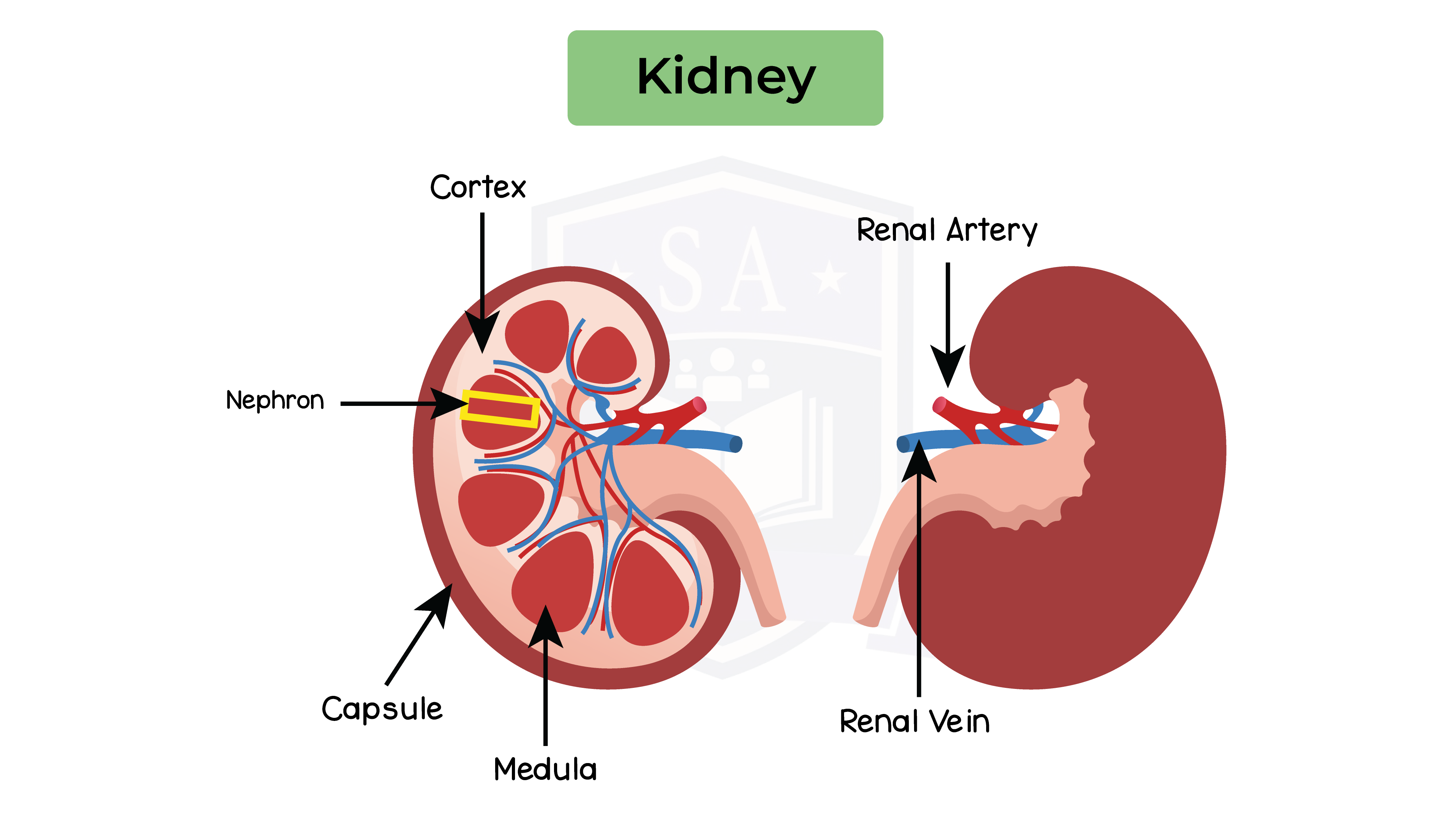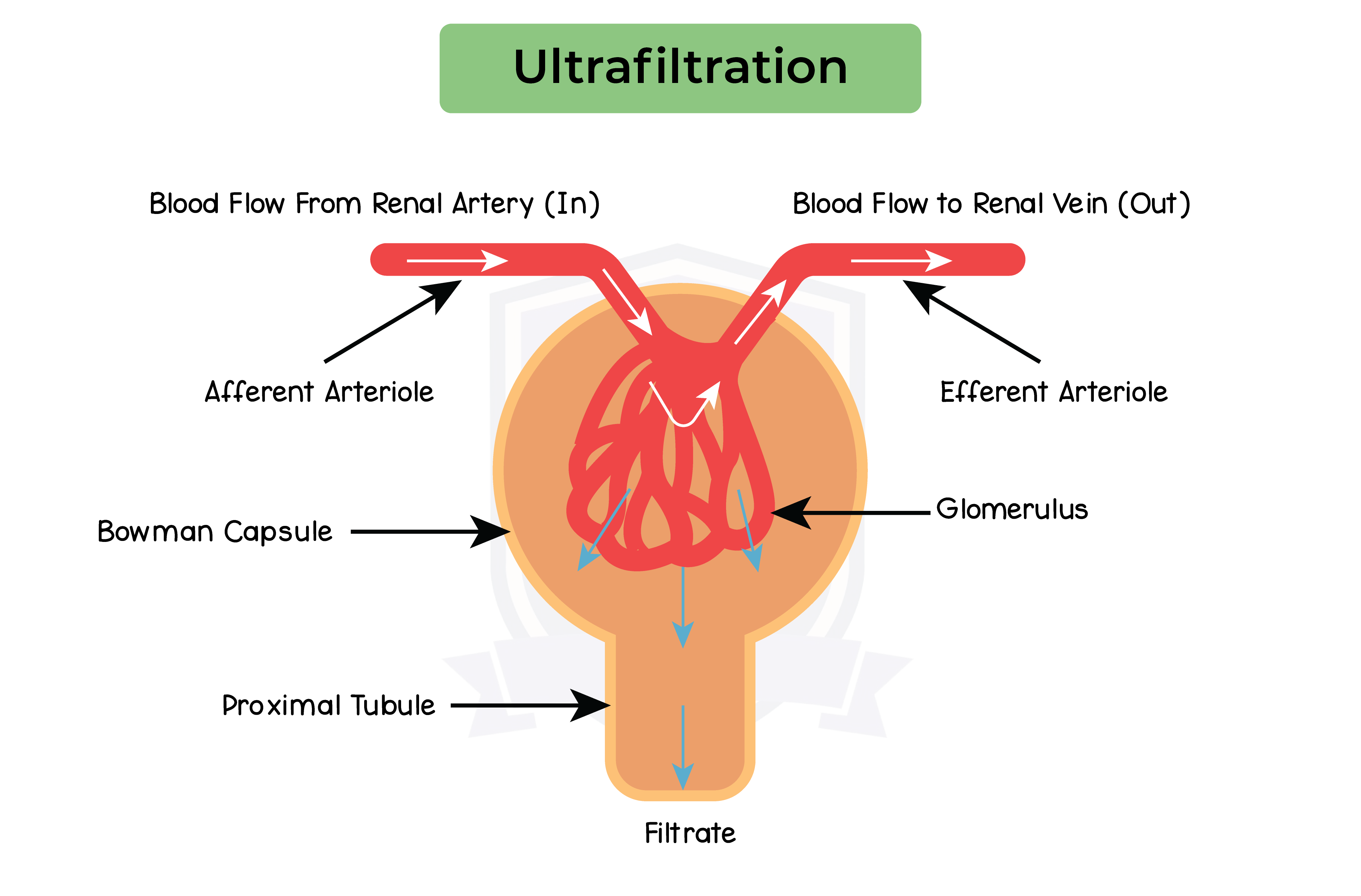REVISION NOTES
IGCSE Edexcel Biology
2.12 Excretion (in Plants)
2.12.1 Understand the origin of carbon dioxide and oxygen as waste products of metabolism and their loss from the stomata of a leaf
Excretion:
- Metabolic reactions required within cells produce waste products
- Excretion removes:
- Waste products of metabolic reactions
- Toxic substances
- Substances in excess
Waste products of metabolism in a plant:
- Waste products of photosynthesis are either O2 or CO2 depending on light intensity
- In the presence of sufficient light:
- Rate of photosynthesis is higher than rate of respiration
- Increased O2 production and decreased excess CO2
- Net increase in O2 levels making it the waste product
- In the absence of sufficient light
- The rate of respiration is higher than the rate of photosynthesis
- Increased CO2 levels and no production of O2
- Net increase in excess CO2 levels making it the waste product
- Metabolic waste products diffuse out of the plant through the stomata
2.12.2 Know the excretory products of the lungs, kidneys and skin (organs of excretion)
Excretion in humans:
- Kidneys excrete urea, water and mineral ions through urine
- Lungs excrete carbon dioxide and water through exhalation
Skin excretes excess mineral ions and water through sweat
2.12.3B Understand how the kidney carries out its roles of excretion and Osmoregulation
Osmoregulation
- Process of maintaining water and salt concentration within the body
- Prevent harmful changes to cells due to osmosis
- Transport of too much water into cells causes swelling
- Diluting effect and can lead to cell lysis
- Transport of too little water into cells causes shrinking
dehydrating effect and cell death
2.12.4B Describe the structure of the urinary system, including the kidneys, ureters, bladder and urethra
Urinary system:
- Responsible for filtering waste products from the blood
- Osmoregulate the body
- Consists of:
- Two kidneys
- A bladder
- Ureters
- The kidneys are connected to the bladder by ureter
- The urethra carries urine from the bladder to outside the body
- Each kidney is connected to:
- Renal artery where oxygenated blood enters the kidney
- Renal vein through which deoxygenated blood leaves the kidney
Structure of urinary system:

Structure of kidney:
- Consists of 3 regions:
- Cortex
- Medulla
- Renal pelvis
- Each kidney has millions of nephrons that start in the cortex, loop down to the medulla and come back up to the cortex
- Nephrons drain into renal pelvis
Urine is collected before being transported to the bladder by the ureter for storage

2.12.5B Describe the structure of a nephron, including:
- The Bowman’s capsule
- Glomerulus
- Convoluted tubules
- Loop of Henle
- Collecting duct
Structure of nephron:
- Nephron is made up of kidney tubule with various sections:
- Bowman’s capsule
- Proximal and distal convoluted tubules
- Loop of Henle
- Collecting duct
- Glomerulus
2.12.6B Describe ultrafiltration in the Bowman’s capsule and the composition of the glomerular filtrate
Ultrafiltration:
- Capillaries branched off from the renal artery lead into a nephron
- They form a knot and sit inside the Bowman’s capsule
- Capillaries get narrower as they lead towards the glomerulus
- Increases blood pressure
- Small molecules in the blood get forced out of the capillaries
- They enter the Bowman’s capsule due to the high blood pressure
- This process is known as ultrafiltration
- The small molecules entering the bowman’s capsule is known as the filtrate which consists of
- Glucose
- Water
- Urea
- Salt
- Useful substances get reabsorbed back into the blood down the nephron
- Water is reabsorbed at the loop of henle and collecting duct
- Salts are reabsorbed at the loop of henle
- Glucose is reabsorbed at the proximal convoluted tubule
- Urea is not reabsorbed

2.12.7B Understand how water is reabsorbed into the blood from the collecting duct
Water reabsorption:
- Filtrate drips through loop of henle
- Salts are reabsorbed by diffusion
- Water is then reabsorbed through osmosis
- Water is also reabsorbed from the collecting duct
- Based on the water demand of the body at that time
2.12.8B Understand why selective reabsorption of glucose occurs at the proximal convoluted tubule
Glucose reabsorption:
- The glomerular filtrate enters the bowman’s capsule
- Glucose is reabsorbed at the proximal convoluted tubule
- Transport proteins for glucose absorption are only found in the proximal convoluted tubule
- Reabsorption of glucose requires active transport
- Nephrons contain an abundance of mitochondria
- At normal blood glucose level
- All glucose is reabsorbed from the filtrate into the blood
- There are enough transport gates in the proximal convoluted tubule to Remove all the glucose
- For people with diabetes or very high blood glucose levels
- Not all glucose can be reabsorbed
- Glucose ends up in the urine
2.12.9B Describe the role of ADH in regulating the water content of the blood
Role of ADH:
- Water reabsorption occurs throughout the nephron
- It is a negative feedback loop
- If water concentration in the blood is too high, less water is reabsorbed
- If the water concentration in the blood is too low, more water is reabsorbed
- Controlled by hormone ADH
- ADH is a hormone released by the pituitary gland
- Dependent on how much water needs to be reabsorbed from the filtrate in the kidneys
- ADH increases the permeability of the tubules to water
- High water concentration in blood leads to a decrease in release of ADH
- Permeability of tubules to water decreases
- Less water is reabsorbed
- Urine becomes very dilute
- Low water concentration in blood leads to increase in release of ADH
- Permeability of tubules to water increases
- More water is reabsorbed
- Urine becomes very concentrated
2.12.10B Understand that urine contains water, urea and ions
Urine content:
- Urea
- Excess mineral ions
- Excess water
- Excess glucose in the case of diabetics
Changes in concentration of urine:
- Urine concentration changes due as:
- The higher the water intake the more water will be excreted
- The higher the temperature, the more water is lost in sweat so more concentrated urine will be produced
The more sweat lost in exercise, the more water is lost overall so more concentrated urine will be produced

